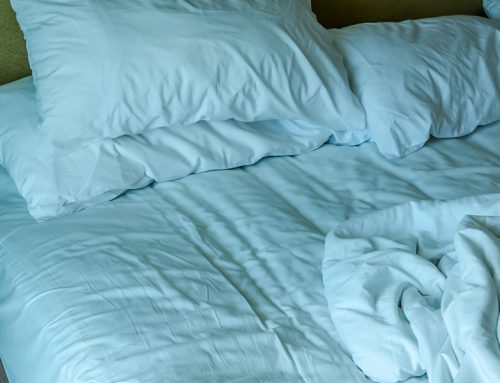 Can you believe that we spend an average of 20,761 hours lying on top of a mattress? But it’s not too difficult to believe. After all, you read, snuggle, sleep and do a lot of things in bed. You also sweat and naturally shed old skin particles. And there’s a common myth that has been circulated, which is: your mattress doubles in weight every eight years due to the accumulation of human debris and dust mites.
Can you believe that we spend an average of 20,761 hours lying on top of a mattress? But it’s not too difficult to believe. After all, you read, snuggle, sleep and do a lot of things in bed. You also sweat and naturally shed old skin particles. And there’s a common myth that has been circulated, which is: your mattress doubles in weight every eight years due to the accumulation of human debris and dust mites.
Before you go shivering and quivering at the thought of this (we know, the image isn’t pretty), rest assured that your mattress doesn’t really gain weight from this, but there is some truth to the dust mites. And it’s useful to know what is happening to your mattress over time so you can better protect it and know when it’s time to replace it.
What exactly happens to a mattress over time?
As time passes, we use our mattresses more. We might do right by washing our sheets and pillowcases regularly but a mattress is also prone to collecting unwanted dirt and debris. Naturally, even if we clean ourselves often, we will sweat and shed dead skin particles, sweat, body and hair oil on our mattress. In fact, humans lose around 500 million skin cells every day. This is also a surface that becomes warm and moist when it’s trapped beneath our body heat. So what will happen is inevitable.
Dust mites will find a home in your mattress and feed on these dead skin cells in abundance. And if you own a pet that sleeps with you? Well, dust mites feed on their dead skin cells too. Though they’re too small (less than 1 mm long) to see with the naked human eye, they’re present. According to Ohio State University, an average mattress can have anywhere from 100,000 to 10 million dust mites living in it.
Beyond the dust mites, it’s natural for our mattresses to go through some noticeable wear, especially towards the end of their lifespan. If you’re sleeping on it every night, then you can expect some light sagging down the line.
This doesn’t mean that you can’t find durable mattresses that stand up well to many years of use. It just means that all mattresses have an expiry date. However, there are ways to extend it and keep your mattress as long as possible.
How long does a mattress last?
You might be wondering this question as you’re reading this now. Like us, our mattresses age. Just instead of wrinkles and height gained, it’s While mattresses have a long lifespan, they’re meant to last around 8 – 10 years on average. At the low end is innerspring mattresses, which have an average life of 6 – 8 years and natural latex mattresses can last more than 15 years. So the lifespan of your particular mattress will be highly dependent on the materials used.
When to replace your mattress
Here are 8 signs to be cognisant of that will indicate when it’s time to be out with the old and in with the new. Basically, over time you’ll see changes in your mattress and your body. As a result, it might be time to start shopping around for a new one.
You’ve had your mattress for over 8 years.
Your mattress is visibly sagging or lumpy.
Your mattress has worn or frayed edges.
Your mattress starts to creak or pop when you go to lie on it.
You’re having troubles falling asleep every night when you didn’t before.
You wake up with aches and pains.
You are suffering from bad dust allergies.
You get better sleep elsewhere.
How do make your mattress last longer
Use a mattress accessories
The following mattress accessories are a great way to maintain the quality of your mattress:
Concluding thoughts
Ultimately, without proper care and attention, mattresses can go through a beating over time as a result of dust-mite build up and inadequate protection. The lifespan will depend on a number of factors, buf if you keep the bed clean and ensure it’s support, then you can get plenty of years of healthy, restorative sleep.





